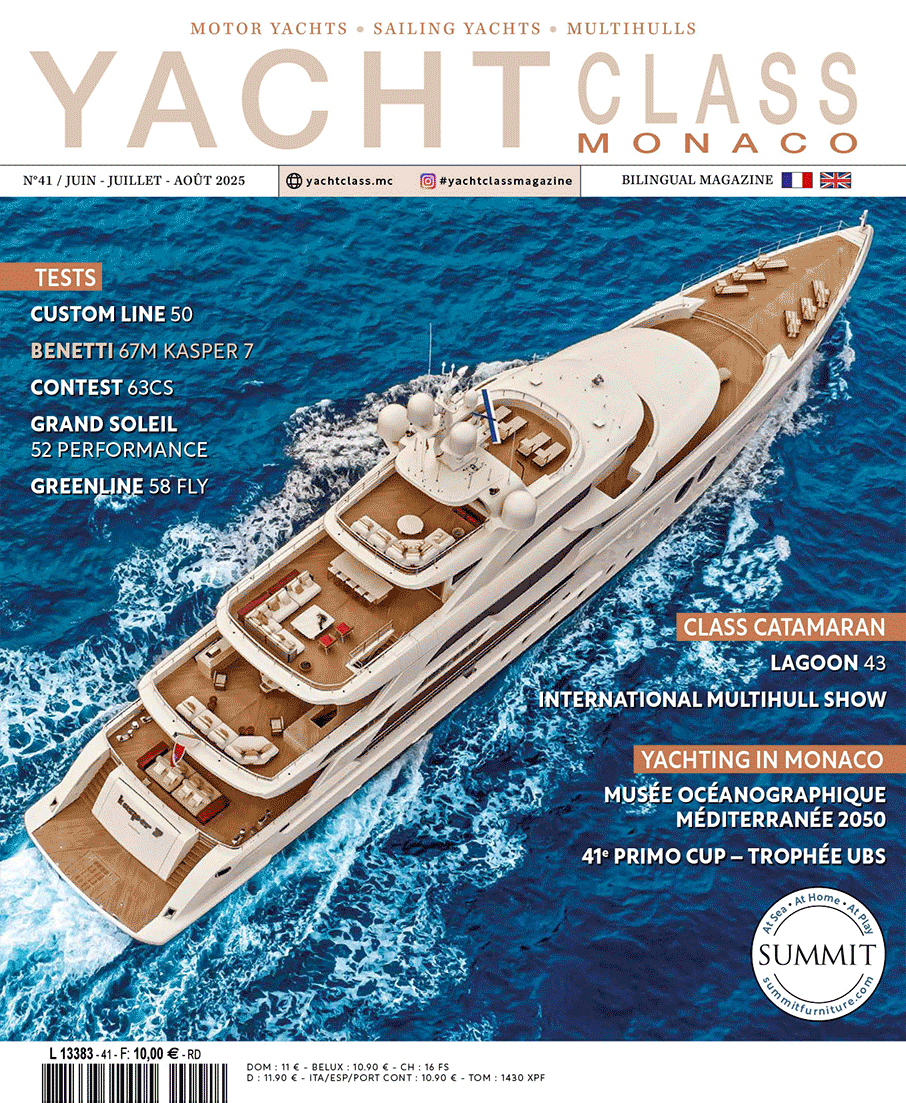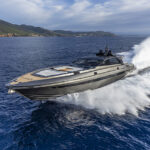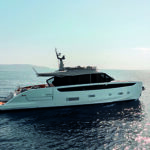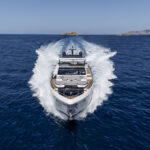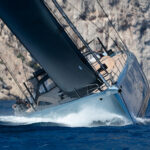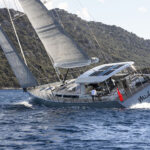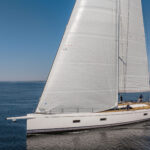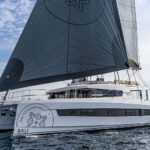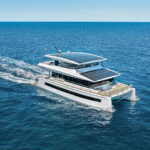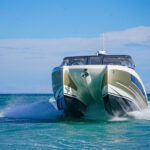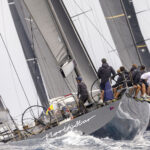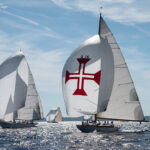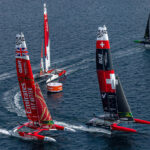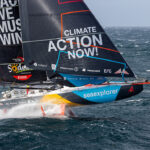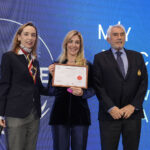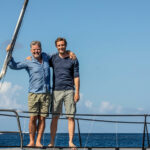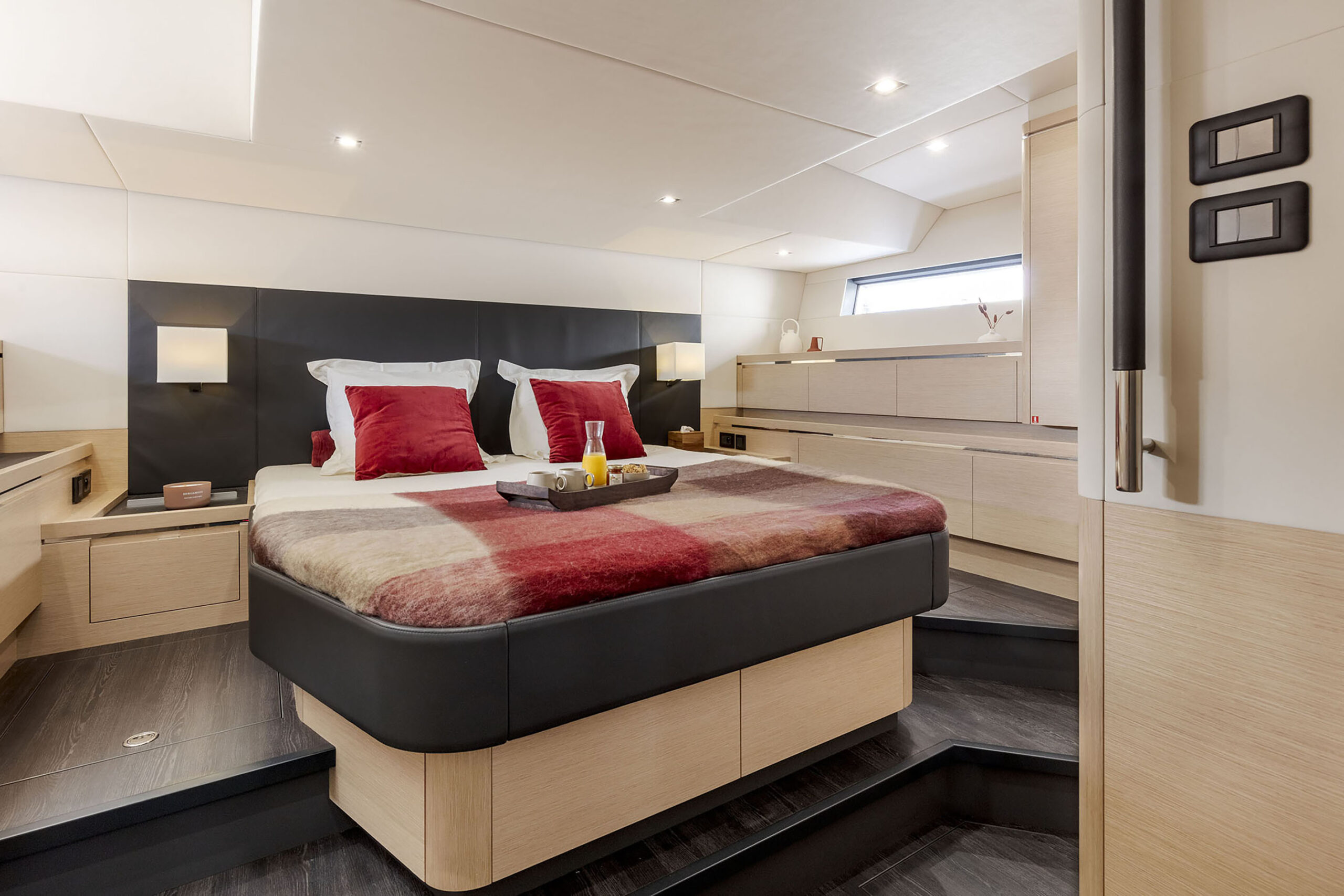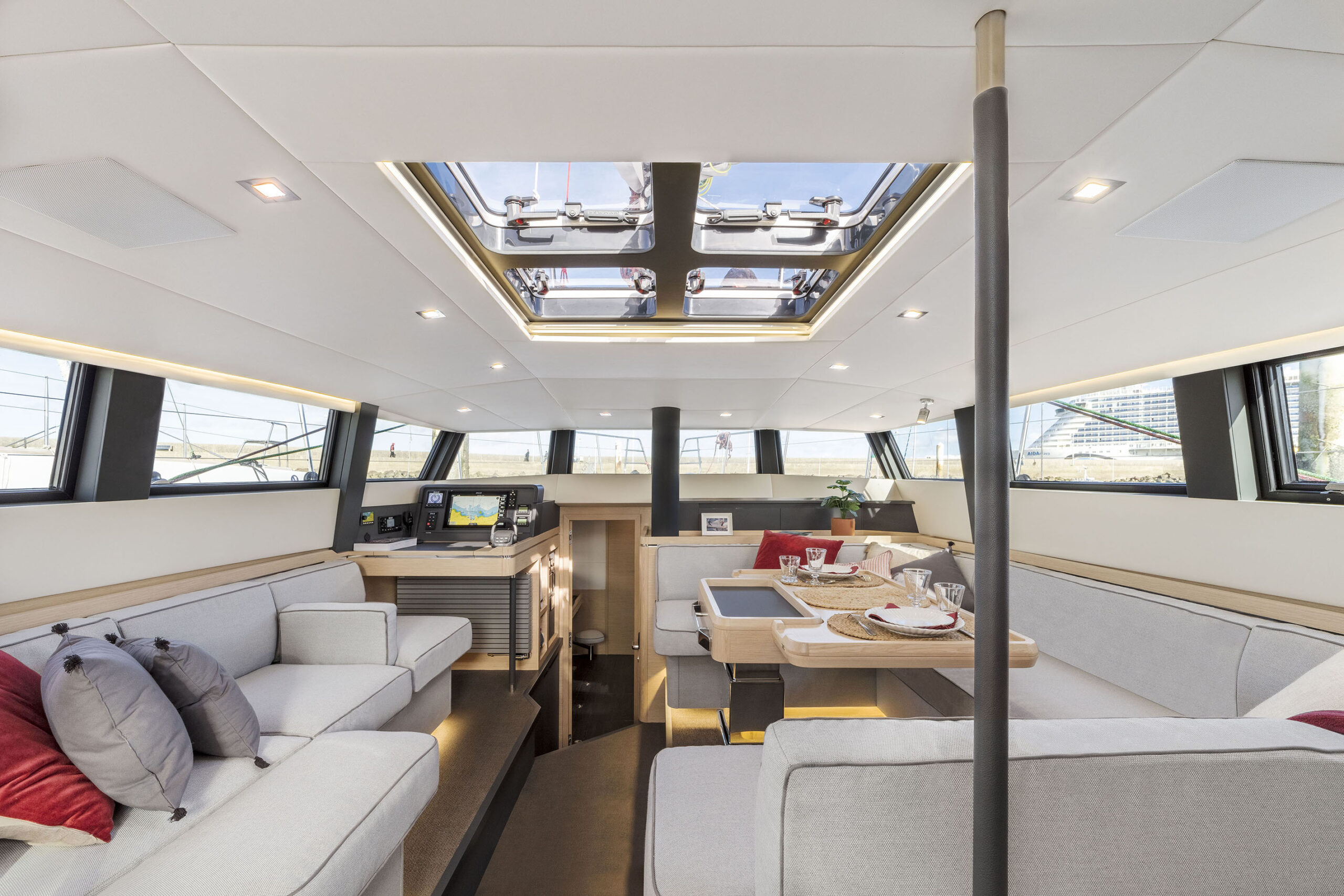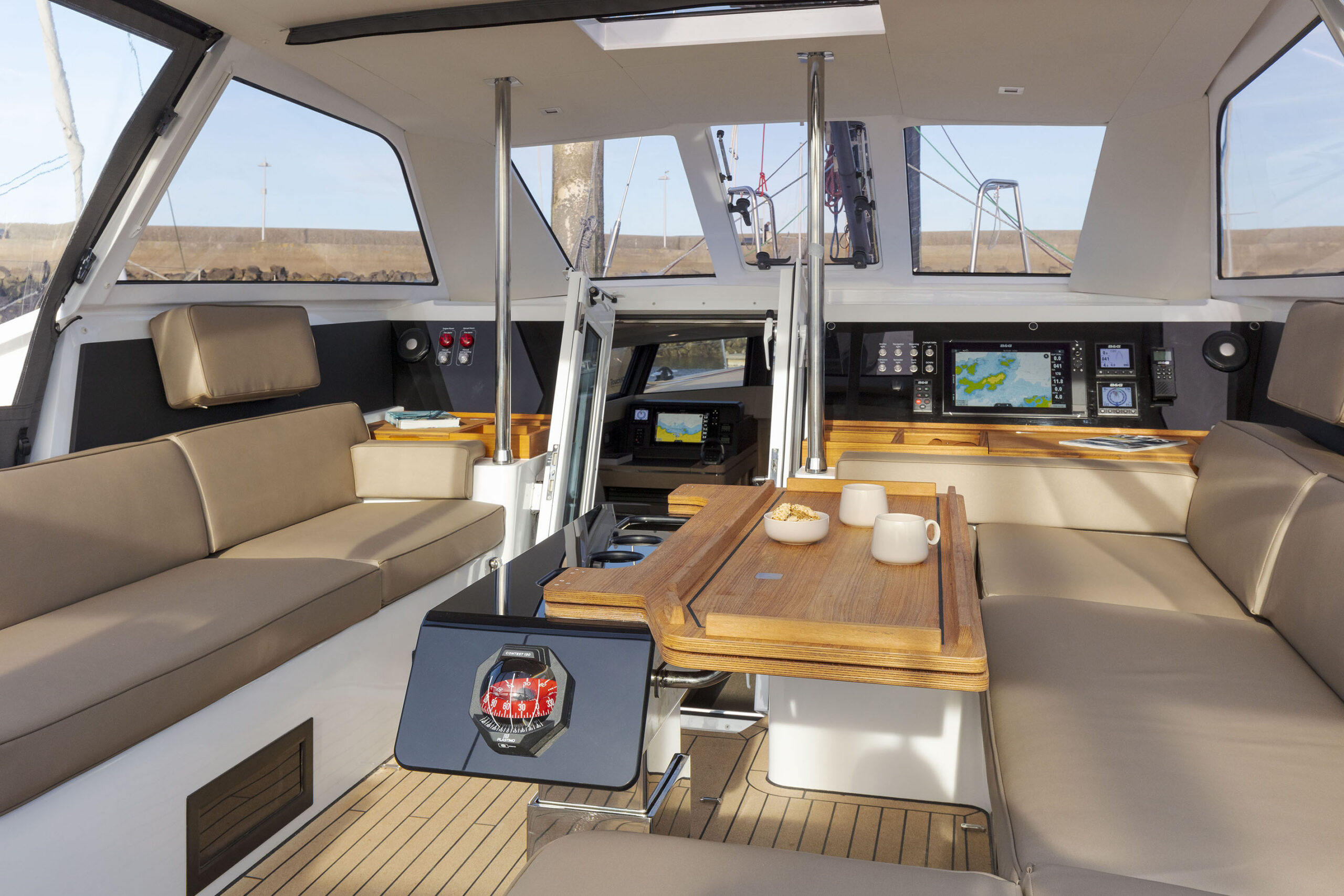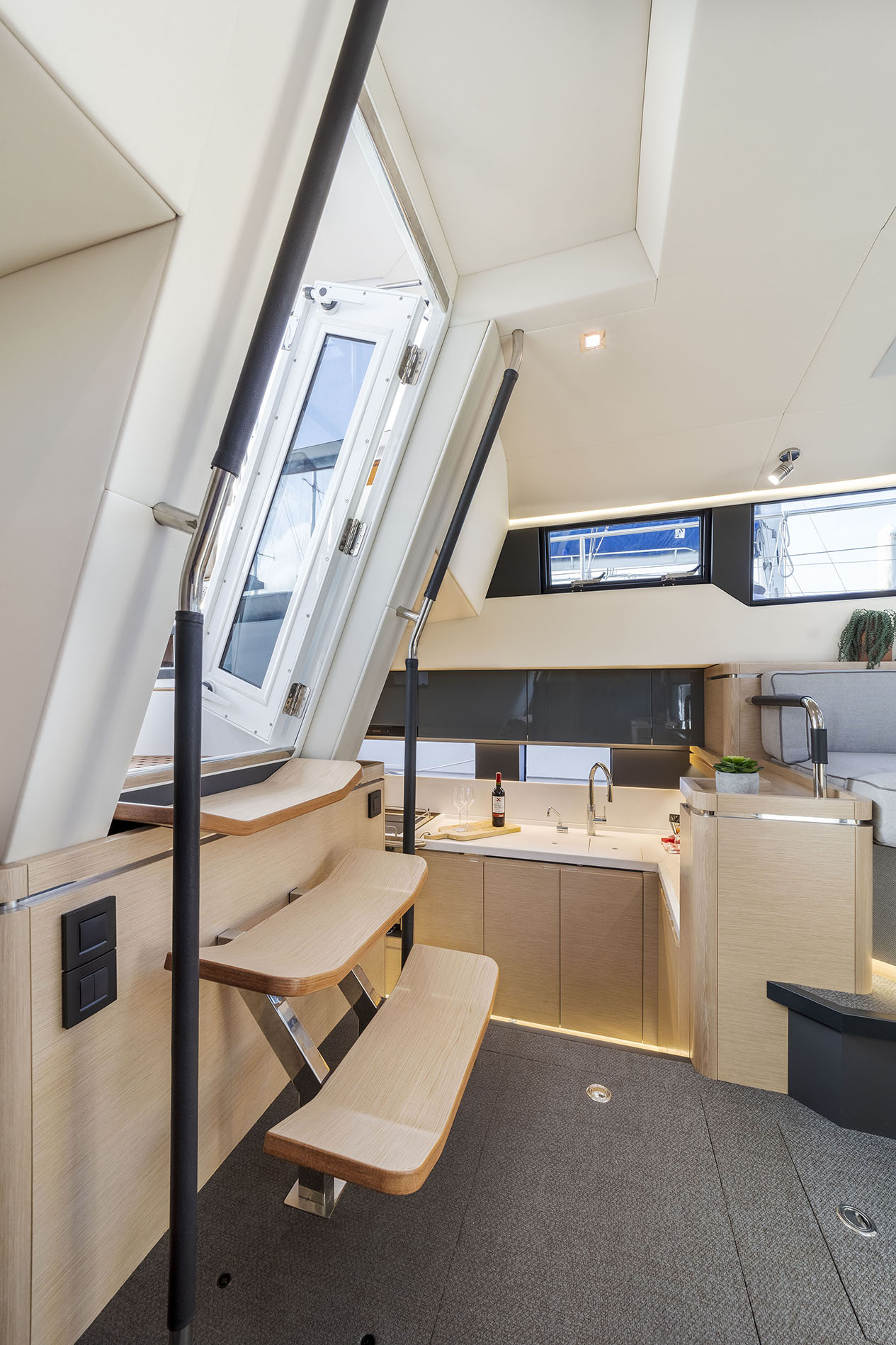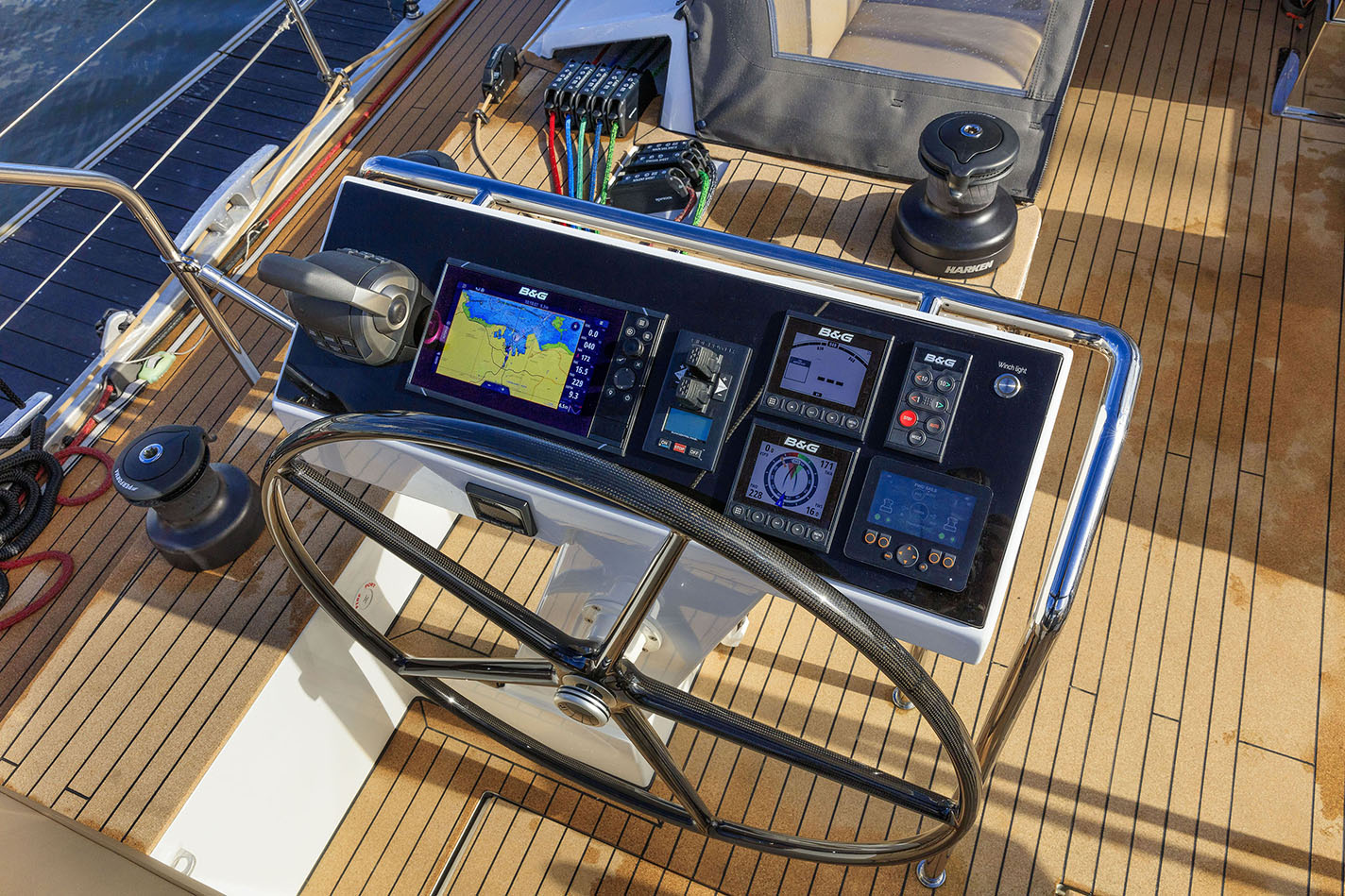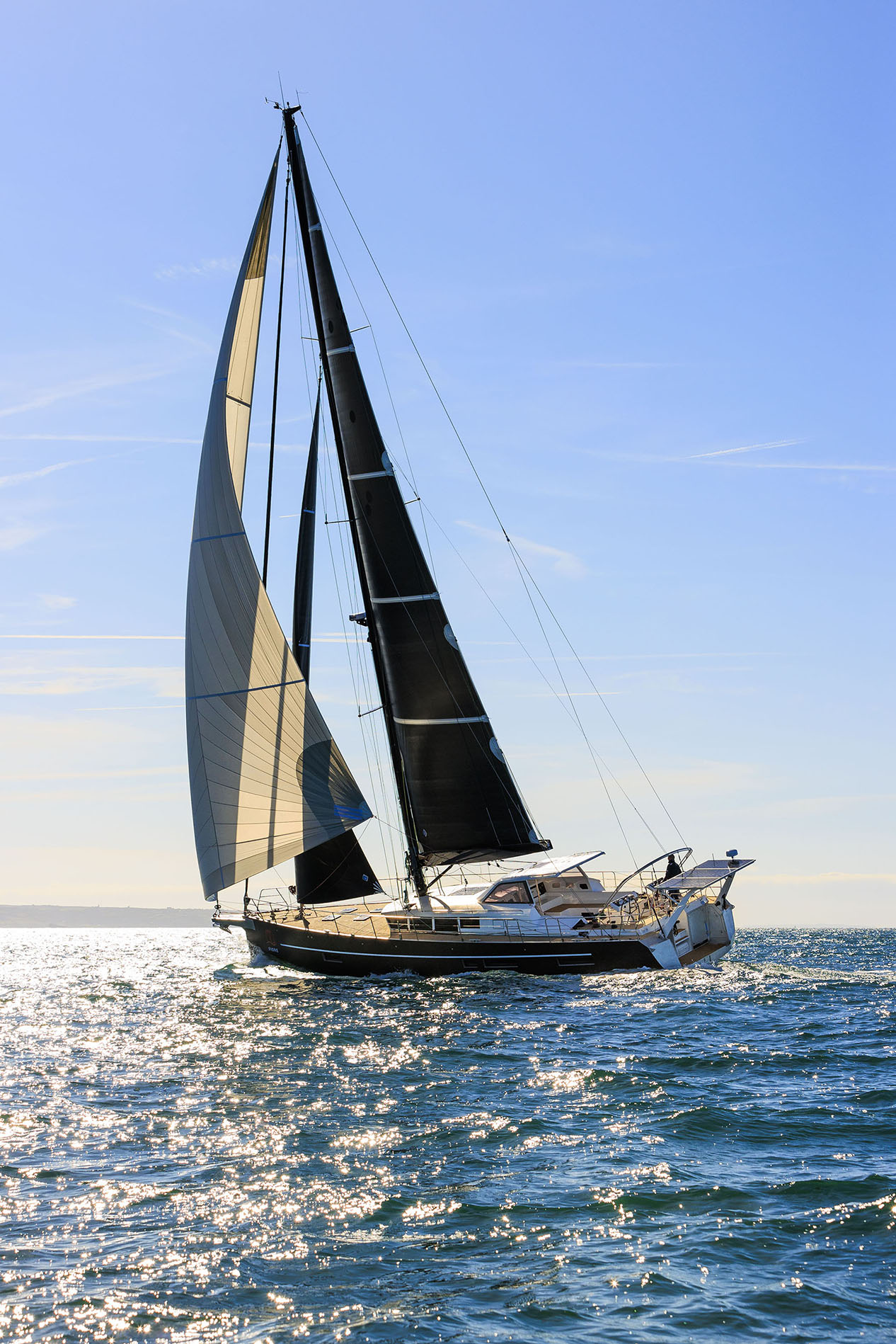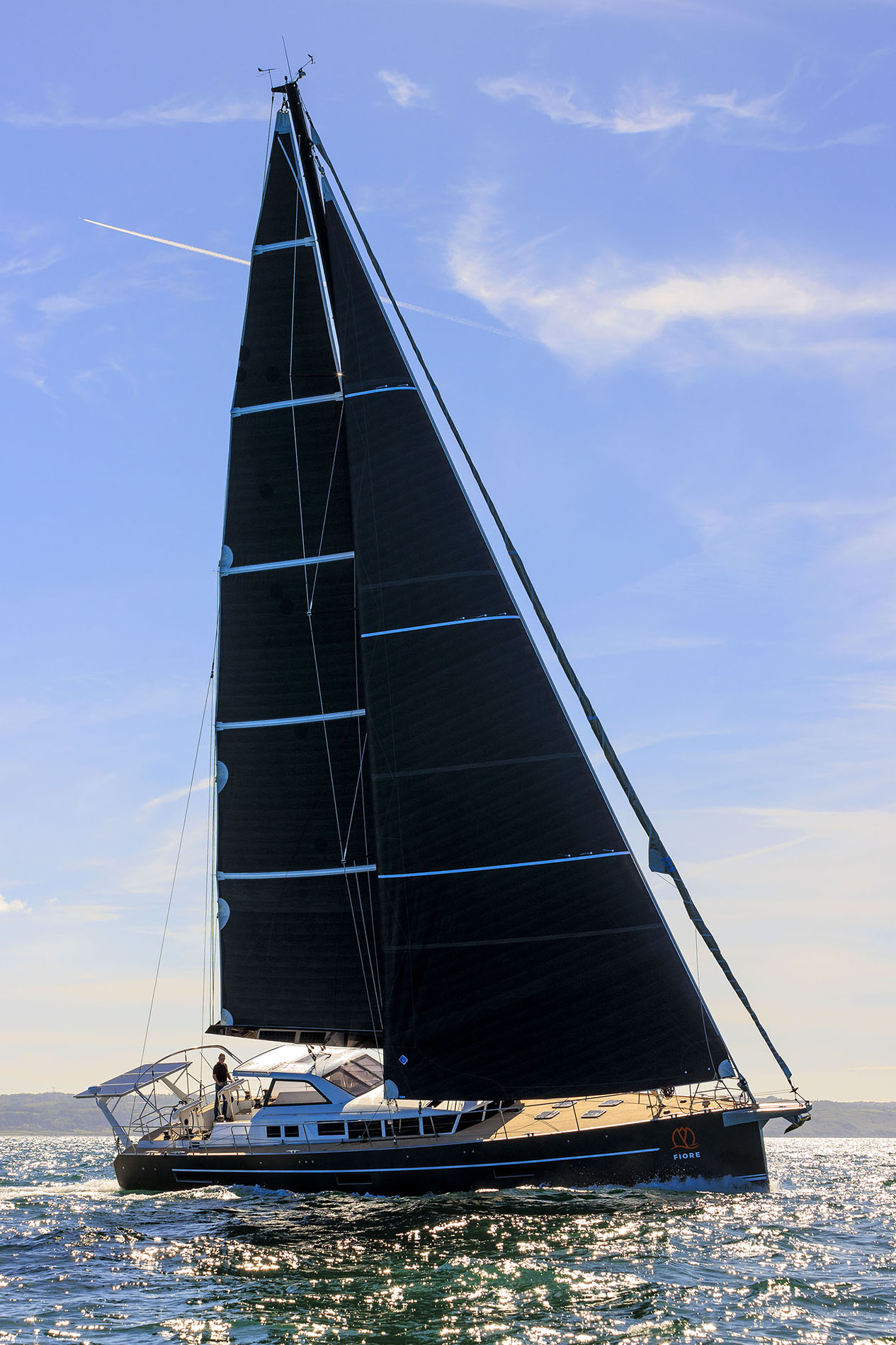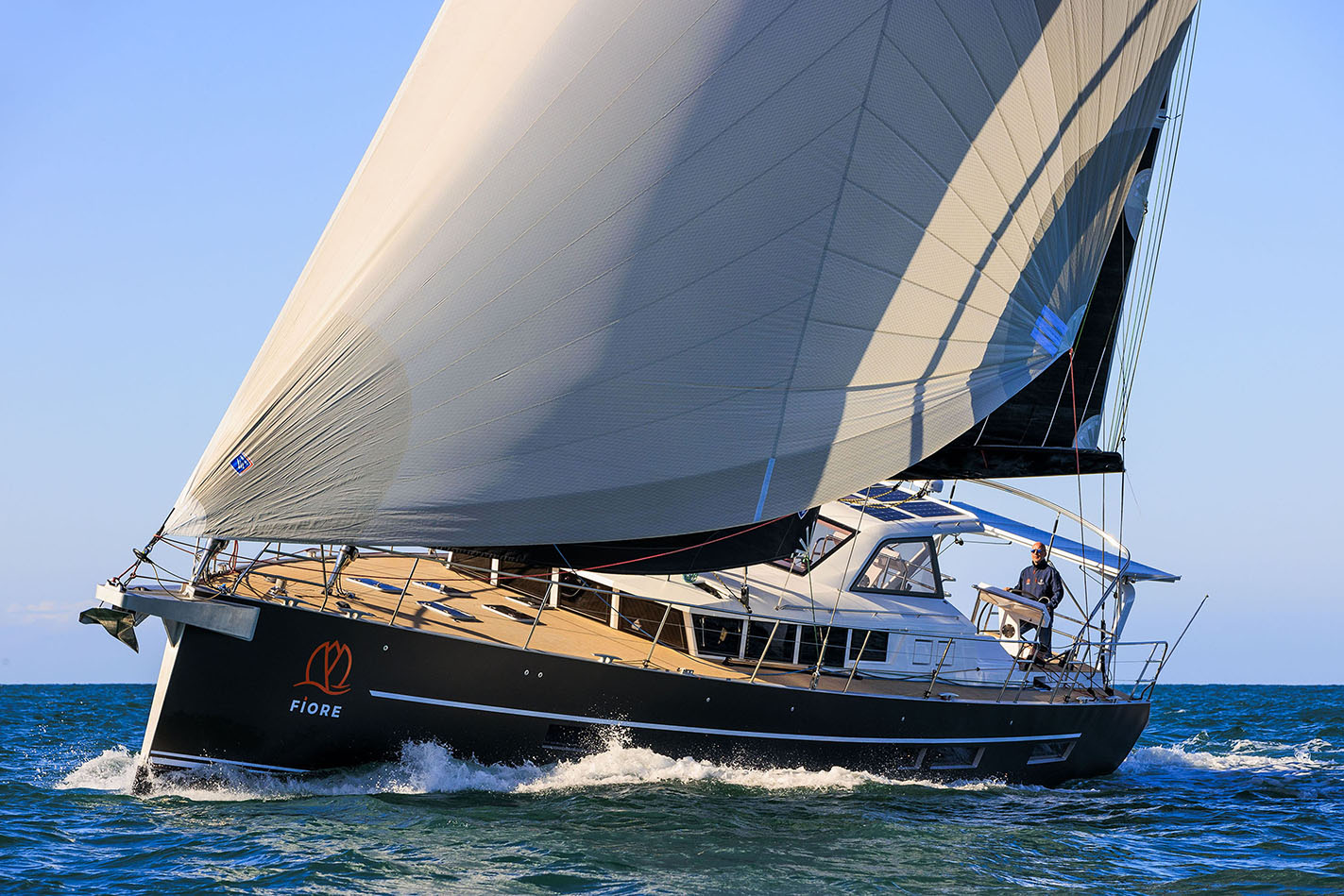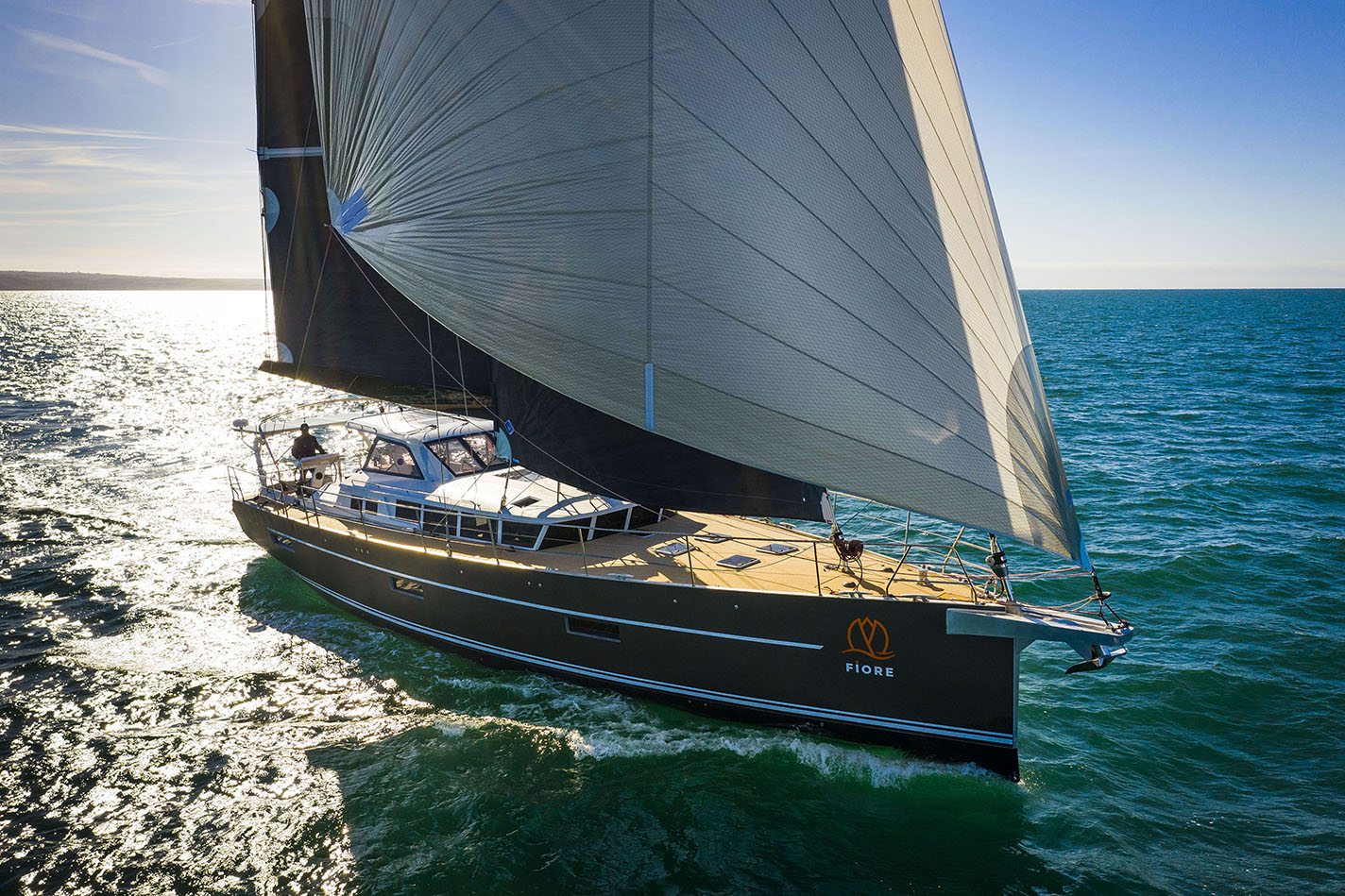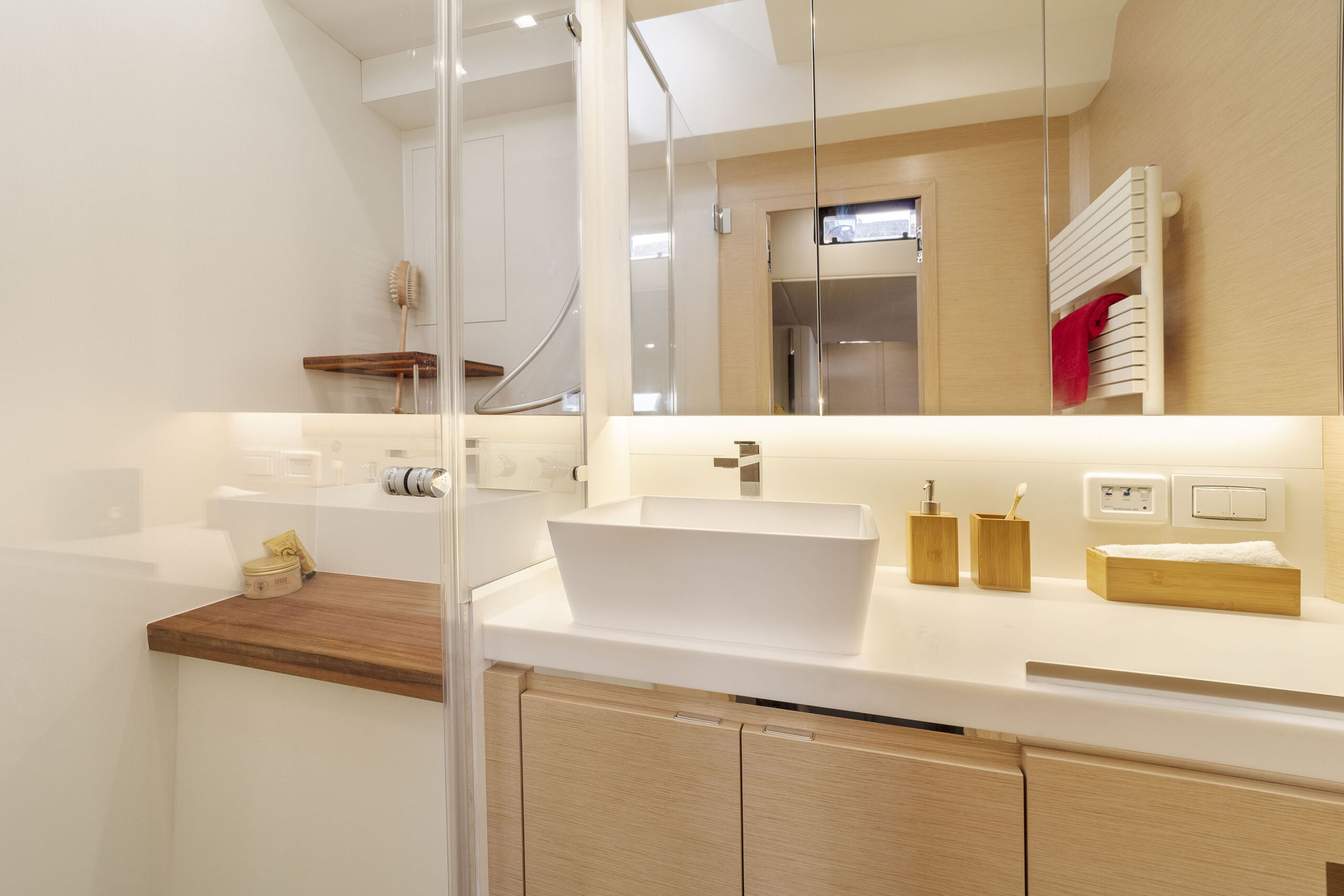Presentation
Yacht Class n°33 (june-july-august 2023)
Garcia Yachts – Grand large yachting
French shipyard Garcia Yachts, a member of the Grand Large Yachting group, designs aluminium yachts that are ready for any situation. The Exploration 60, its flagship, is packed with safety features, but also with an impressive level of comfort. Not to mention great performance under sail.
Written by : Christophe Varène – Photos : J. Houyvet / Garcia Yachts
Travelling. Going far away. Discovering new horizons. Every sailor dreams about it, but there is a world of difference between dream and reality. Above all, there is the need for the perfect adventure companion. And that is what Garcia Yachts offers with its Exploration 60, a high-performance, comfortable yacht capable of facing all situations in safety. So, when the opportunity to embark for an outing off Cherbourg is offered, there is no question of refusing. Moored at the pontoon, the Exploration 60 is noticeable for its substantial volume, with a large freeboard and imposing superstructure. At first glance, many details confirm the programme for sailing in demanding seas: a real handrail replaces the top rail, the inverted windscreen in the wheelhouse accentuates the adventurous side, the welded cleats on the rail, the rigid cap on the cockpit, the solid arch supporting the davits and solar panels… Embarkation is by the sides or by the stern deck. Close to the water level, the latter has several doors: one on starboard is occupied by an articulated arm, which supports the outboard of the dinghy, while another one on port opens on the storage for the deflated dinghy during the big crossings.
At 9.5 knots, despite the 40 tonnes loaded
After this quick overview, it was time to cast off for an outing under the sign of the sun, but also of a nice oscillating breeze of 15 to 25 knots in certain gusts. This Exploration 60 has a carbon rig with a much greater air draft than the aluminium mast (28.30 m instead of 25.40 m) for an increased sail area (195 m2 instead of 168.40 m2) and controlled weight in the upper reaches. The mainsail is easily hoisted by hand to two thirds of the way up before using the electric winches. Four of them are located in the navigation and manoeuvring area of the cockpit and are available for halyards, sheets and reefing. Under one reefed mainsail and staysail, on a hydraulic furler, a few beam tacks give a speed varying between 7.5 and 9.5 knots depending on the reef. Proof, with more than 40 tons of load that the U-shaped hull, designed by Olivier Racoupeau, is efficient and glides with a moderate list. The helm is smooth and precise, with the two rudders playing their roles well, but you have to remain vigilant, while letting the boat live. To get downwind a little more, the solent is unfurled instead of the staysail and, to feel any variations, the daggerboard is raised in full: the behaviour remains identical, safe and healthy. The helmsman enjoys himself, with visibility somewhat obscured by the protective structure, which sometimes requires moving around. The instrument panels in front of the steering wheels are functional and well equipped with electronics. The controls for the hydraulic system (furlers, winches, vang, backstay, daggerboard, and windlass), autopilot, thrusters (stern and bow) and engine are all located on each panel. The return to port is done with the engine at cruising speed, i.e. 8 knots at 1 800 rpm.
A watertight door at the top of the companionway
A tour of the deck reveals the high standard of construction with quality materials, starting with the soft, eye-catching, elegant flooring that is laid in strips like teak, but with less maintenance. Handrails everywhere ensure peace of mind when moving around and two balconies at the foot of the mast provide support when manoeuvring. Forward of the aft manoeuvring area, the cockpit is protected by a composite canopy – side and aft hatches close off this space completely – and features long benches, a central folding table that leaves a wide passageway when folded, and, near the companionway, a real outside chart table. An impressive watertight door leads to the interior, which is then transformed into a survival cell, and, by taking only three steps, the deck saloon, raised above the technical areas to optimise the centre of gravity, offers a perfect view of the outside through the double-glazed portholes (40 cm high!). The accommodation is a real little cocoon, with comfortable benches, oil-fired heating, with radiators throughout the boat, and refined woodwork, all designed by Isabelle Racoupeau. Why should leaving for hostile climatic regions mean austerity?
A large owner’s cabin at the stern
When visiting the Exploration 60, one notices alternating elements of comfort and safety equipment, always in a marine spirit. The chart table, forward of the saloon, also has an engine control to adjust the engine speed without leaving the saloon. The galley is elegant and very well equipped and its U-shaped layout makes it easy to use when sailing. This first unit features a large aft owner’s cabin with central bed, sofa, wardrobe, storage and private bathroom. In the standard version, half of this space is dedicated to a double cabin and half to a workshop, while a family version offers two double cabins, but with a shared bathroom. Below the saloon at the front, a beautiful guest cabin includes a desk and wardrobe to port and the double bed to starboard. Two doors forward give access to the toilet and a workshop/storage room. It is difficult to find fault with this Garcia Exploration 60: while it guarantees safe and serene sailing in the most remote waters of the planet, whether they are extremely cold or tropical, her fittings and equipment make it a true yacht.
Safety in the DNA of the Garcia Yachts shipyard
In 1974, the Garcia brothers, Jean-Michel and Jean-Louis, trained as boilermakers, converted to the construction of aluminium boats and, over the decades, several encounters helped the business to grow. In the 1990s, it was the architect Philippe Harlé who, with the Maracuja and Passoa, established the reputation of the shipyard. The integration into the Grand Large Yachting group, of the founders of the Allures shipyard, accelerated the development and the sailors Jimmy Cornell, specialist in sailing in very cold areas, and Pete Goss, famous ocean racer, brought their expertise to design all-terrain and all-weather boats. Aluminium is the ideal material for this because of its resistance qualities: in the event of an impact with a UFO, there is a dent, not a hole. On the Exploration 60, everything has been designed above all for safety, such as the hull apertures above the waterline, the skegs in front of the rudders, the bulkheads and the watertight door… A revealing detail is the piece welded to the base of the bow, which serves both as a small icebreaker and as a towing ring, even by a tractor on a beach (anecdote from life experience). Even the STX, the righting coefficient, calculated with the centreboard up, is the same as for a keelboat. On the technical side, all the equipment is easily accessible and the boat has a workshop. Autonomy is ensured by the large tanks (fuel and water plus watermaker), as well as by the solar panels and the hydro-generator. Finally, for owners, training on all aspects of navigation can be provided through Grand Large Services and its school.



Technical sheet
